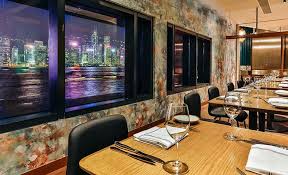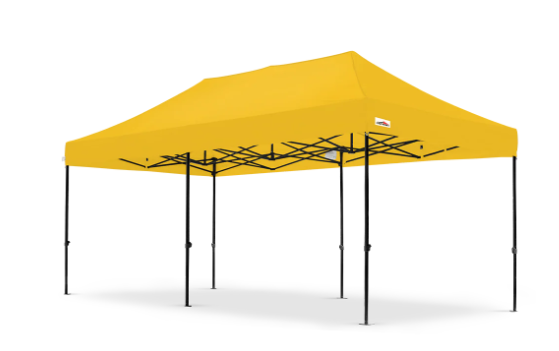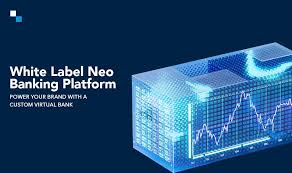
The humble wallpaper is an often overlooked gem in the treasure chest of branding. Let’s dive into this and explore how even something as seemingly simple as a wallpaper can play a surprising role in branding and visual identity.
Branding Through Design: Colors, Patterns, and Wallpapers
Imagine entering a room. What hits you first? It’s often the overall ambiance, right? The colors, patterns, and textures that envelop a space can subtly (or not-so-subtly) influence how you feel. This is precisely where your commercial wallpaper comes striding onto the scene with its hidden flair.
From a psychological perspective, the visual cues in our environment can significantly impact our mood and perceptions. A well-chosen wallpaper can set the tone for a brand’s personality—whether it’s exuding tranquility, vibrancy, sophistication, or innovation, the ambiance contributes to the consumers’ perception before they even interact with your product or service.
Now, why do brands spend millions perfecting their logos, color schemes, and packaging designs? Because visual identity is a silent force that communicates values, ethos, and emotion. Just like a brand’s logo, a wallpaper can become a visual metaphor, subtly embedding itself in the consciousness of those who encounter it.
Commercial wallpaper can also be a canvas to tell a story.
Are the patterns playful and abstract, or structured and sleek? Each choice speaks volumes and aligns with your brand’s ethos.
Take institutions like tech companies or financial firms who might lean towards modern, minimalist designs to signify cutting-edge thinking and reliability, or a wellness brand choosing calming earth tones and organic patterns to convey serenity and natural balance.
Moreover, from a practical point of view, an inviting and cohesive visual environment often enhances employee satisfaction and productivity—happy employees, happy customers, right?
Your wallpaper isn’t just décor; it’s a brand ambassador! It’s an opportunity to extend your brand’s reach into an everyday space in a way that is both subtle and profound. It creates a seamless brand experience that touches not only the conscious but also the subconscious mind of your employees and clients.
Enhancing Customer Experience: Ambiance and Functionality
Visual Storytelling with Commercial Wallpapers
First and foremost, consider what your brand stands for. What are its core values and personality? Are you all about innovation and sleek technology, or is your essence rooted in warmth and community? Understand your brand’s voice, as this will be your guiding star.
Reflect on the Mood
Think about the emotions you want to evoke in each space. Should the customer feel tranquillity, excitement, trust, or creativity? For example, a spa might aim for calm and serenity, whereas a co-working space might aim for energy and collaboration.
Harmonize with the Logo
Your brand’s logo is a visual mnemonic. It can dictate the foundational palette and set the initial tone. Use its colors as a starting point, but don’t shy away from exploring complementary hues that align with your ambience goals.
Questions of Color
- Warm Tones (reds, oranges, yellows): Evoke energy, passion, and warmth. Great for stimulating areas or creative hubs.
- Cool Tones (blues, greens, purples): Nurture calmness, trust, and serenity. Ideal for reception areas or meeting rooms.
- Neutral Tones (greys, whites, earth tones): Provide balance and professionalism, often used to complement bold statements in focus areas.
Play with Patterns and Textures
Before committing fully, test your choices in smaller areas or get feedback from a diverse set of eyes. The way people interact with spaces may surprise you, offering further insights for tweaks.
- Bold patterns in creative settings can spark conversation and inspiration.
- Soft textures like waves or organic forms soothe and relax in wellness or medical spaces.
- A simple geometric grid can exude reliability and innovation in corporate spaces.
Creating Ambience Variety
Variety within consistency is key. While the overall palette should remain harmonious, introduce subtle variations to denote different functions or moods. This could be as simple as a shift from darker tones for serious meeting spaces to lighter, open hues for casual areas.
- Accent Walls—Use striking patterns or colors on a single wall to create visual interest without overwhelming.
- Layering Textures—Introduce diverse materials that complement the wallpaper, like wood panels or metal accents, for added depth.
When bringing all these components together, envision each room having its own identity while remaining a part of the greater brand narrative. This harmony becomes the golden mean, engaging customers through an immersive tapestry of color, pattern, and texture of your commercial wallpapers.
Advantages of Murals and Custom Wallpapers
Murals allow you to paint a story or convey a theme that resonates with the ethos of your space. Unlike logos or brand colors, a mural can add layers of narrative that unfold over time, capturing the imagination.
Murals don’t need to scream the brand’s values; they can whisper it through symbolic imagery that evokes emotion and piques curiosity. A mural doesn’t have to be a literal representation of what you do but can instead align conceptually with your brand’s mission, tone, or values.
Guidance on Choosing Mural Images
Think Concept, Not Just Content
Select images that present an abstract or thematic relevance to your brand. A financial institution might choose a mural of a vast, flowing river to symbolize stability and continuous growth without depicting literal monetary themes.
Reflect the Environment’s Purpose
Match the mural to the intent of the room. A tech startup might use abstract digital landscapes—a fusion of circuits and city grids that represent connection and innovation in breakout areas without needing overt tech iconography.
Evoke Aspirational Qualities
Consider imagery that inspires desired feelings. For wellness or health spaces, think expansive landscapes or serene natural scenes that promote relaxation and well-being.
Example Domains and Ideas
- Corporate Office
Abstract art depicting interconnected shapes or soft color transitions that embody teamwork, connection, and fluidity without overt corporate symbols.
- Cafés/Restaurants
Vintage botanical illustrations or stylized cultural motifs reflecting regional authenticity or culinary heritage.
- Hotels/Hospitality
Murals reflecting local landscapes or historical artistic styles to root the brand in the region’s identity while adding elegance.
- Educational Spaces
Artistic representations of knowledge and growth, like a mural that creatively depicts the flow of ideas through symbolic elements like open books transforming into birds.
Practical Side: Choosing Materials
Consider a mix-and-match approach for different rooms based on their exposure to wear and tear.
Vinyl Wallcoverings
These are excellent for high-traffic areas, offering scratch resistance and easy cleaning. Perfect for spaces that need long-lasting yet beautifully customizable options.
Non-Woven Paper
Offers a seamless look and is relatively easy to install and remove, making it suitable for bespoke designs that might need periodic updating.
Textured Materials
Laminated surfaces can add a tactile feel that enhances visual depth while providing resilience.
Incorporating custom murals into your spaces can cultivate immersive experiences that resonate emotionally with your clients. By choosing symbols that align with a brand’s storytelling yet allow for artistic interpretation, the result is an ambience that feels both intentional and delightfully spontaneous.
Write and Win: Participate in Creative writing Contest & International Essay Contest and win fabulous prizes.


